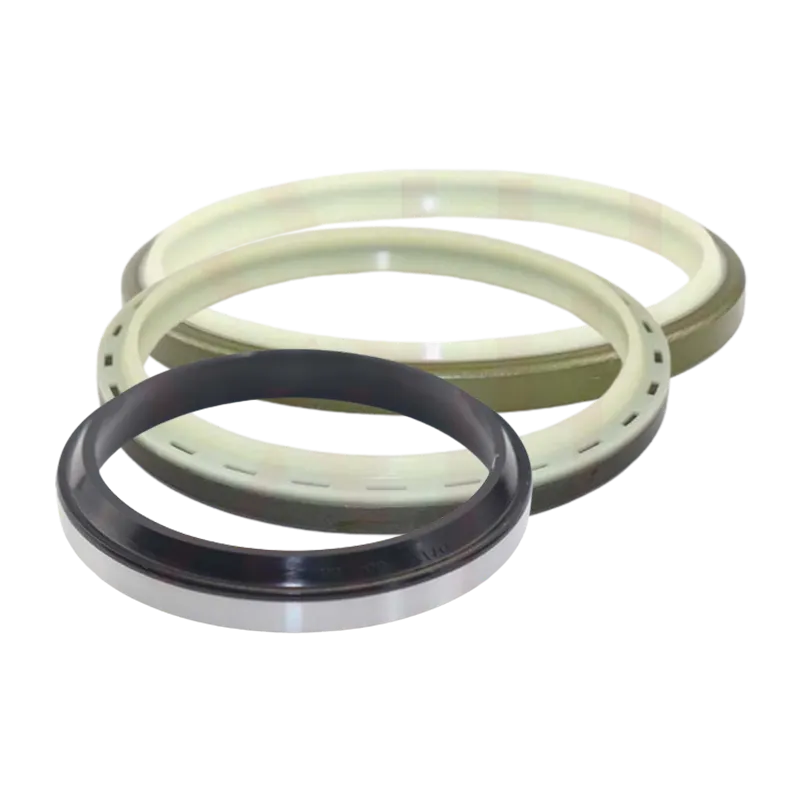Oct . 02, 2024 01:14 Back to list
Understanding Hydraulic Shaft Seals for Enhanced Equipment Performance and Longevity
Understanding Hydraulic Shaft Seals An Essential Component in Fluid Power Systems
Hydraulic systems are integral to various industrial applications, ranging from heavy machinery to automotive engineering. One of the most critical components of a hydraulic system is the hydraulic shaft seal. This seemingly simple component plays a pivotal role in ensuring the efficiency and longevity of hydraulic systems. In this article, we will explore the importance of hydraulic shaft seals, how they function, and the factors to consider when selecting and maintaining them.
What is a Hydraulic Shaft Seal?
A hydraulic shaft seal, often referred to as a rotary seal, is designed to prevent the leakage of hydraulic fluids as they pass along rotating shafts. The seal is typically composed of elastomeric materials, metal, or a combination of both, and is engineered to fit snugly around the shaft while accommodating the dynamic movement during operation. These seals are crucial for maintaining system pressure and preventing contamination from external sources.
How Hydraulic Shaft Seals Work
The primary function of a hydraulic shaft seal is to create a barrier that prevents hydraulic fluid from escaping the system while also preventing dirt and debris from entering. When the hydraulic system is in operation, the rotating shaft generates centrifugal forces that exert pressure on the seal. High-quality hydraulic seals are designed with precise tolerances that enable them to maintain contact with the shaft, thereby minimizing leakage.
Typically, hydraulic shaft seals employ a lip design that ensures a tight fit against the surface of the shaft. This lip is often complemented by a spring mechanism that keeps the lip pressed against the shaft, accommodating any slight misalignment or wear that may occur over time. Different designs, such as double-lip seals or various geometries, can be utilized depending on the specific application requirements.
Importance of Hydraulic Shaft Seals
The impact of hydraulic shaft seals on system performance cannot be overstated. Effective seals contribute to the following aspects
1. Fluid Retention By preventing leaks, hydraulic shaft seals maintain the necessary fluid levels for optimal hydraulic pressure, which is vital for the system’s operation. 2. System Efficiency Leakage can result in significant energy loss, leading to decreased system efficiency and higher operational costs. A well-functioning seal minimizes energy expenditure.
hydraulic shaft seal

3. Contamination Prevention Hydraulic fluids are susceptible to contamination, which can lead to system failures. Seals act as a first line of defense against external contaminants, prolonging the lifespan of hydraulic components.
4. Reduced Downtime Addressing leaks and seal failures can result in costly downtime. Reliable hydraulic shaft seals enhance operational reliability and reduce maintenance intervals.
Selecting Hydraulic Shaft Seals
When choosing hydraulic shaft seals, several factors must be taken into consideration to ensure optimal performance
- Material Compatibility The choice of material is crucial, as it must withstand the specific chemicals and temperatures found in the hydraulic fluid being used. Common materials include nitrile rubber, polyurethane, and fluorocarbon compounds.
- Diameter and Tolerance The seal must fit precisely around the shaft diameter. Incorrect sizing can lead to premature failure, so accurate measurements and tolerances are essential.
- Operating Conditions Factors such as pressure, temperature, and the speed of the rotating shaft should be analyzed to select a seal that can perform effectively under those conditions.
Maintenance and Replacement
To extend the life of hydraulic shaft seals, regular inspection and maintenance are essential. Operators should check for signs of wear, such as visible leakage or decreased system performance. If leaks are observed, the seals should be replaced promptly to prevent further damage to the hydraulic system.
In conclusion, hydraulic shaft seals are critical components that contribute significantly to the functionality and efficiency of hydraulic systems. By preventing leaks and contamination, they ensure reliable operation and reduce maintenance costs. Understanding their importance and adhering to proper selection and maintenance practices can lead to enhanced performance and a longer lifespan for hydraulic equipment.
-
TCN Oil Seal Metal Ring Reinforcement for Heavy Machinery
NewsJul.25,2025
-
Rotary Lip Seal Spring-Loaded Design for High-Speed Applications
NewsJul.25,2025
-
Hydraulic Cylinder Seals Polyurethane Material for High-Impact Jobs
NewsJul.25,2025
-
High Pressure Oil Seal Polyurethane Coating Wear Resistance
NewsJul.25,2025
-
Dust Proof Seal Double Lip Design for Construction Equipment
NewsJul.25,2025
-
Hub Seal Polyurethane Wear Resistance in Agricultural Vehicles
NewsJul.25,2025
-
The Trans-formative Journey of Wheel Hub Oil Seals
NewsJun.06,2025
Products categories
















